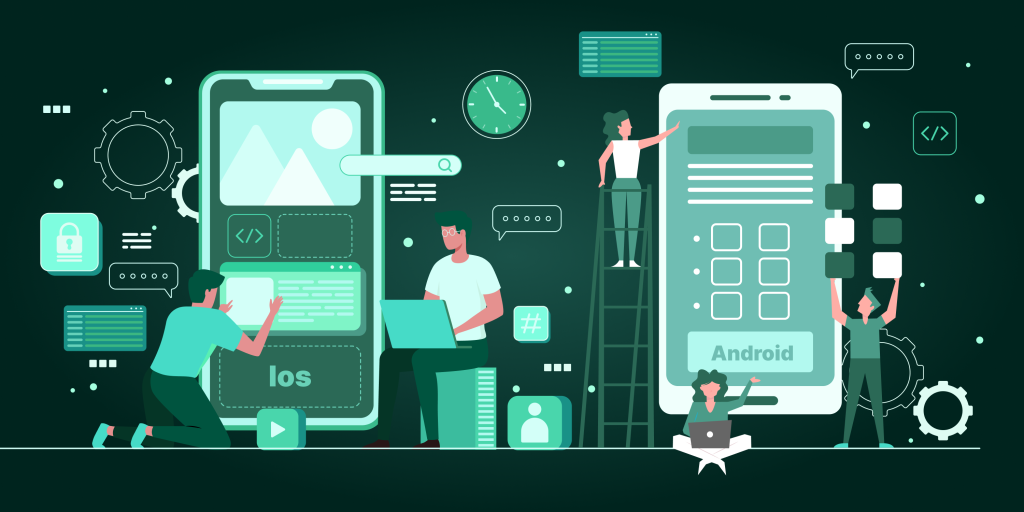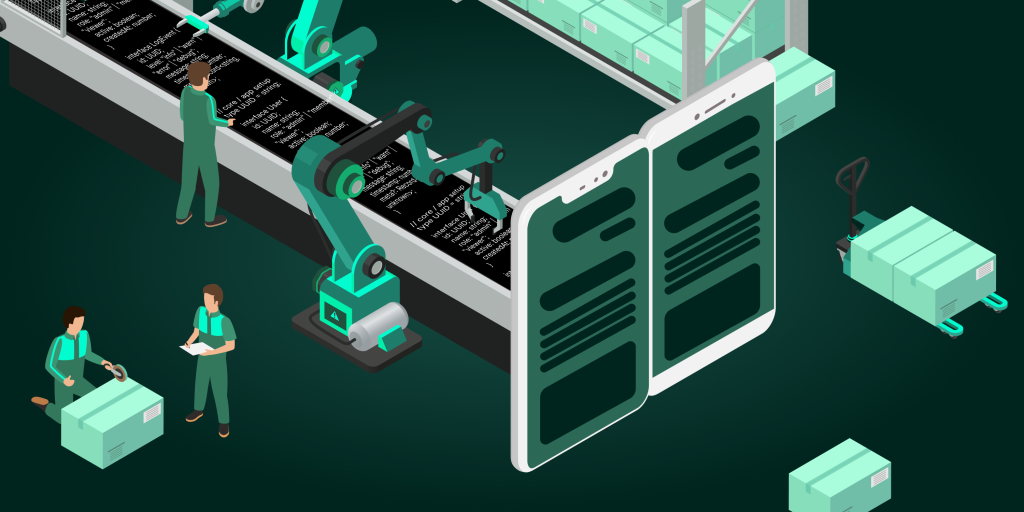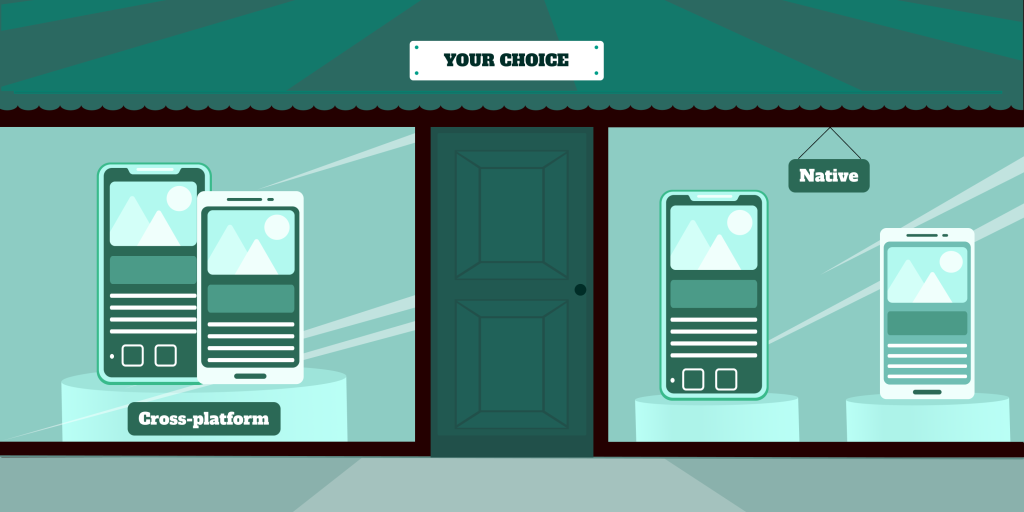Every business that decides to launch a mobile application inevitably faces a fundamental first choice: which path to take? Create two separate “native” applications for iOS and Android, or use a single codebase (cross-platform) for both platforms?
This isn’t just a technical question. Your choice will directly impact the budget, timeline, performance, and user experience (UX) of your future product.
As development experts at VRG Soft, we help clients make this decision every day. Let’s break down the pros and cons of each approach so you can make an informed choice.

What is Native Development?
Native development is the process of creating an application specifically for one particular operating system (OS) using its “native” programming languages and tools.
- For iOS: Swift or Objective-C languages and the Xcode environment.
- For Android: Kotlin or Java languages and the Android Studio environment.
You are essentially building two completely different applications from scratch for each platform.
Pros of Native Development
- Maximum Performance: Applications have direct access to all device hardware features (camera, GPS, accelerometer) without any “layers” in between. This ensures the best speed, responsiveness, and fluid animations.
- Perfect UX/UI: The app looks and feels 100% “native” to the user. Buttons, menus, gestures—all UI elements comply with Apple’s Human Interface Guidelines and Google’s Material Design.
- Instant Access to New Features: As soon as Apple or Google releases a new feature (e.g., ARKit, new widgets, or Health APIs), your developers can implement it immediately.
- Reliability and Security: Considered a more stable and secure approach due to direct OS interaction and fewer third-party dependencies.
Cons of Native Development
- High Cost: You essentially need two development teams (iOS and Android) or one team that will do double the work. This doubles the development costs.
- Longer Time-to-Market: Building two separate applications takes significantly more time than one.
- Complex Maintenance: Any change or bug fix needs to be implemented in two different codebases.

What is Cross-Platform Development?
Cross-platform development allows you to write code once and run it on multiple platforms (iOS and Android). This is achieved using special frameworks like Flutter (from Google) or React Native (from Facebook).
These frameworks act as a bridge, translating the single codebase into UI elements that look and feel almost native.
Pros of Cross-Platform Development
- Budget Savings: This is the main advantage. One team, one codebase -development costs can be 30-50% lower than with the native approach.
- Fast Time-to-Market: You can launch your app on both platforms simultaneously and much faster. Ideal for testing hypotheses and building an MVP (Minimum Viable Product).
- Single Codebase: Maintenance is simplified. When you fix a bug in one place, you fix it for both platforms.
- Easier to Find Developers: Cross-platform development (especially React Native) often requires web developers (JavaScript/React), who are more abundant in the market.
Cons of Cross-Platform Development
- Performance: Although modern frameworks (especially Flutter) have achieved “near-native” performance, they can lag behind native code in very complex, graphically intensive applications or during heavy computations.
- UX/UI Compromises: Sometimes, compromises must be made to make the interface look good on both iOS and Android, which can lead to a “not-quite-native” feel.
- Delay in New Feature Support: If Apple releases a new feature, you’ll have to wait for the framework’s team (Flutter or React Native) to add support for it.
- Framework Dependency: Your app is “locked in” to the ecosystem and future of the chosen framework.

Comparison Table: Native vs. Cross-Platform
| Criterion | Native Development | Cross-Platform Development |
| Performance | (Maximum) | (High, but with nuances) |
| Cost | (High) | (Medium/Low) |
| Speed of Development | (Slow) | (Fast) |
| UX/UI | (Perfectly “Native”) | (Good, but often a compromise) |
| Access to APIs/Features | (Instant) | (Delayed) |
| Maintenance | (Two codebases) | (One codebase) |
When to Choose What? Recommendations from VRG Soft
There is no “bad” or “good” approach. There is only an approach that is right or wrong for your specific task.
Choose NATIVE development if:
- You need maximum performance: You are building a 3D game, an Augmented Reality (AR) app, a complex photo/video editor, or an app that heavily uses background processes.
- UX/UI is your top priority: Your app must feel impeccably “native,” and animations must be perfectly smooth.
- You need access to complex APIs: The app integrates deeply with the phone’s hardware, Bluetooth devices, or requires the latest OS features (e.g., specific fintech or HealthKit APIs).
- It is a long-term flagship product: You have the budget and time to create a benchmark product that will evolve for years.
Choose CROSS-PLATFORM development if:
- You have a limited budget and tight deadlines: This is the classic scenario for startups.
- You want to test an idea quickly (MVP): You need to get to market as soon as possible, gather user feedback, and see if the product is viable.
- Your app is content-oriented: This could be a blog, news app, simple e-commerce, delivery app, or an internal corporate tool. For such tasks, cross-platform performance is more than sufficient.
- You value simple maintenance: You don’t have the resources to maintain two separate teams and want updates to be released simultaneously.
Conclusion

The choice between native and cross-platform development is always a balance of ambition, budget, and time.
Native development is like a custom-tailored suit: expensive, slow to make, but fits perfectly. Cross-platform development is like high-quality ready-to-wear clothing: faster, cheaper, and works great for 90% of situations.
At VRG Soft, we are experienced in both methodologies. We don’t push one approach over the other; instead, we analyze your business goals to propose the tech stack that will solve your specific problem.
Need help choosing? Contact us for a free consultation, and let’s build your next successful application together!